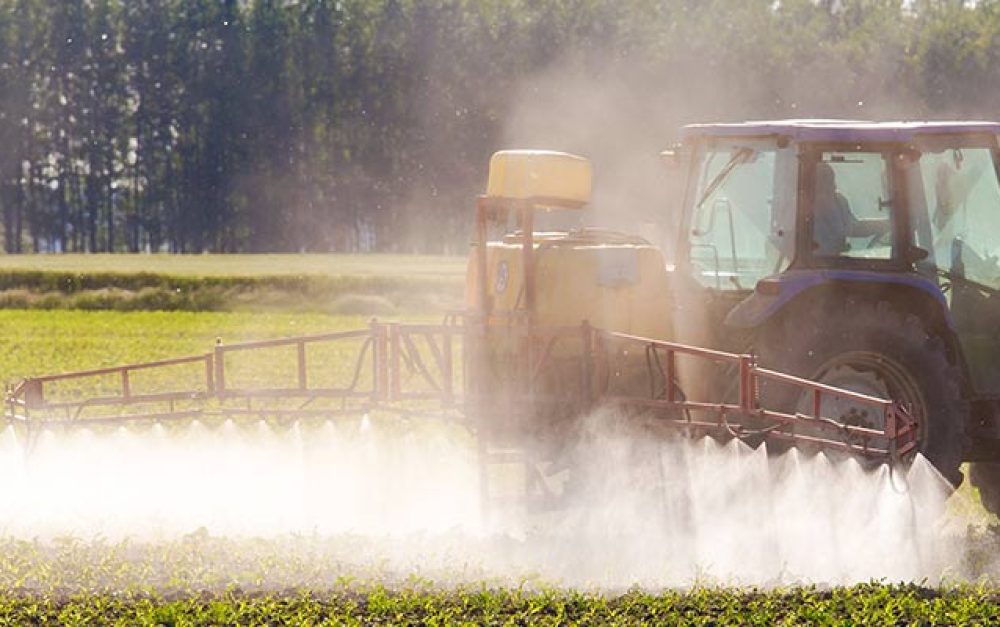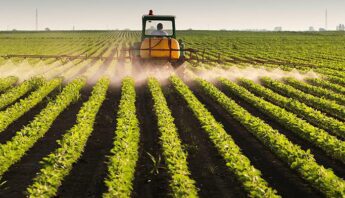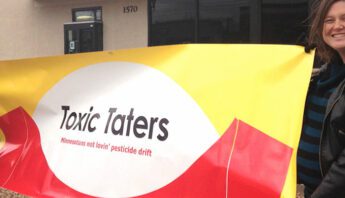The often invisible problem of pesticide drift is undermining the health and livelihood of rural families across the country. We’re doing something about it, and you can help.
In rural communities across the country, crops are damaged and families, farmers and workers are breathing air contaminated by drifting pesticides.
Yet there’s little support for farmers facing crop loss, and few rules in place — at either the state or national level — to protect rural communities from drift, or even measure its impact on human health.
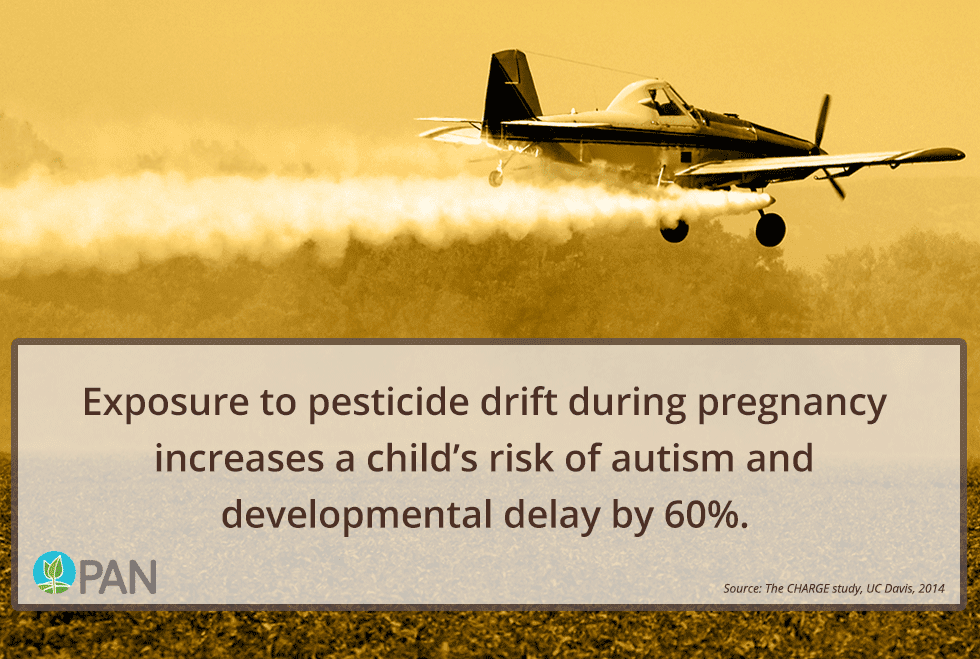 Share on Facebook | Pin on Pinterest
Share on Facebook | Pin on Pinterest
What we’re doing
Using our Drift Catcher device, PAN works with communities across the country to document drifting pesticides and the harms they cause.
We monitor state data on drift incidents and damage where the information exists, highlight policies that are working, like buffer zones and pesticide use reporting, and target officials at the local, state and national level to change policies that aren’t.
Using grassroots science and coalition organizing, we press for changes that protect farmers and communities from drift. This includes both immediate protections and long term changes, like reducing reliance on the most dangerous, drift-prone pesticides — and transitioning to agroecological practices.
Get involved!
From Iowa to Hawai’i and beyond, there are many ways to help #StopDrift. Individuals across the country can help protect rural communities in potato-growing regions from drift by urging McDonald’s to buy spuds produced without health-harming chemicals — click the Toxic Taters campaign tile below to learn more.
Local groups across the country can use PAN’s tools to get a drift campaign started, and everyone can use their family’s food dollars to support farmers who are changing their practices to avoid drifting pesticides. Check out our WhatsOnMyFood.org online tool — and share it with friends and family.
If you live in California or Hawai’i, see how you can help protect schoolchildren from drifting pesticides on our Healthy Kids campaign page, below. If you’re in Iowa, join the farmer-led campaign to protect farms and rural communities from drift. And, in Minnesota, connect with the grassroots coalition of rural residents affected by drift from nearby potato fields who launched the national Toxic Taters campaign.

Healthy Kids
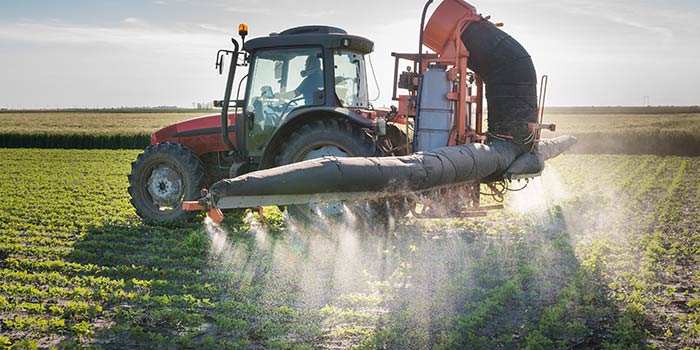
Stop Drift in Iowa
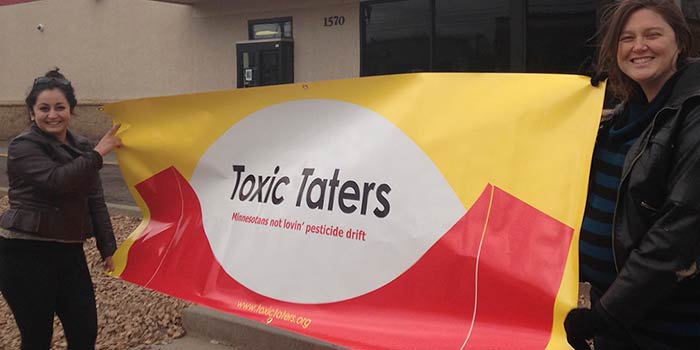
Toxic Taters
Dig deeper
Want to learn more? Find out how drift harms farmers and rural communities, and how our campaigns are tackling the problem.
How drift happens
Pesticide drift is all too common in places where agricultural fields and residential neighborhoods intersect.
Even the most careful, responsible pesticide sprayer cannot control what happens to pesticide droplets once they are released from a plane or tractor. Too often, these droplets end up settling in someone’s yard, mixing with dust in someone’s house, landing on another farmer’s crops, or coating the skin of someone who happens to be at the wrong place at the wrong time.
This type of drift — when a pesticide application misses its target — is called spray drift, and it’s what most people think about when they hear the phrase “pesticide drift.” It’s common, it’s dangerous, and it’s what existing regulations try to prevent.
Another common kind of drift that is also dangerous, but largely ignored, is volatilization drift. This happens when pesticides slowly evaporate into the air from the soil or plants after application — and it can take place over the course of many days.
Harming health, damaging crops
It turns out that many of the most toxic pesticides are also the most drift-prone, floating into nearby homes, schools and fields putting families, farmworkers and sensitive crops at risk. The health harms of breathing these pesticides — “inhalation exposure” — is often overlooked or underestimated by government officials.
And drift doesn’t need to settle directly on people to do damage. Children can be exposed to health-harming pesticides when playing in a field or on a playground that has been drifted on days or weeks previously.
Many of the most toxic pesticides are also the most drift-prone.
Around the country, officials routinely investigate cases of crop damage in which a grower’s crops are harmed or even ruined because a crop duster sprayed when winds were high, or when pesticide mist drifted in from a neighboring farm.
Organic growers are particularly at risk. They face the real possibility of not only being unable to sell their damaged crops, but also of losing their organic certification. This is a tremendous financial loss, as recertification requires three years of organic production during which their crops can’t be sold as organic.
Winning better drift policies
From California to the Midwest, from Hawai’i to our nation’s capital, pesticide drift in rural areas is a growing focus of public concern and policy conversations.
At the national level, EPA is taking a closer look at how drift can put children in rural communities at risk. They’re assessing the impacts of both “spray drift” and “volatilization drift,” and are considering important changes in how they evaluate drift-prone pesticides.
This attention from EPA officials is in response to continuous pressure from PAN and our partners, including legal action grounded in data from our community Drift Catchers across the country. As federal policy progress inches forward, we’re keeping the pressure on. Join our action alert list to add your voice!
Some states are making progress as well, with pesticide use reporting in California providing important data for public health officials and decisionmakers, and local communities in Hawai’i winning buffer zones to protect families from drifting pesticides.
Consumers can support these efforts — and rural communities facing drift everywhere — with their food dollars, both by getting involved in PAN’s campaigns and by making smart choices at the grocery store or farmers’ market.
State campaigns
Momentum to address pesticide drift is building in key agricultural states.
- In Iowa and other midwestern states, public concern is growing about the health and livelihood impacts of drift-prone herbicides, particularly in the face of newly proposed GE crops designed for use with the extremely drift-prone herbicide 2,4-D. A growing coalition of farmer groups is calling for stronger state rules.
- Hawaii’s lush fields have become ground zero for field testing of new GE crops. Since most GE seeds are designed for increased herbicide use, communities are facing unprecedented exposures to pesticide drift. Community members are fighting for buffer zones, pesticide use reporting and other protections.
- In California, recent Department of Public Health data show that more than 500,000 California children attend school within 1/4 mile of pesticide applications every year. PAN works with Californians for Pesticide Reform and other partners to win buffer zones to protect schoolchildren and support for farmer transitions to safer alternatives.
KQED Reports on Pesticide Drift
DriftCatcher Part 1
QUEST on KQED Public Media.<>
- In Minnesota, we’re working with community members to reduce pesticide drift from potato fields. The Toxic Taters campaign is demanding that McDonald’s require its suppliers — like the potato-producing giant R.D. Offutt — to grow potatoes without pesticides that put communities at risk.
Drift issues are creeping onto the radar in other agricultural states as well, from the orchards of Washington and New York to the tomato fields of Florida. As the food movement continues to gain momentum, consumer awareness is growing about how food choices can help protect rural communities from pesticide harms.



